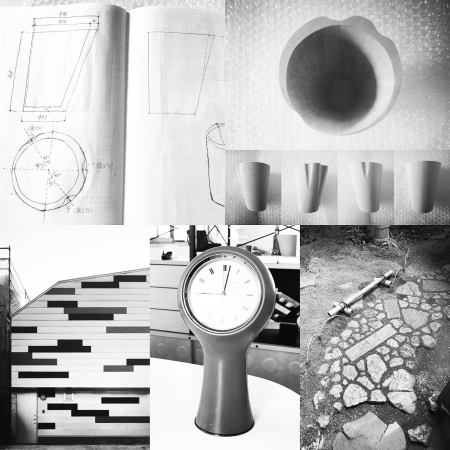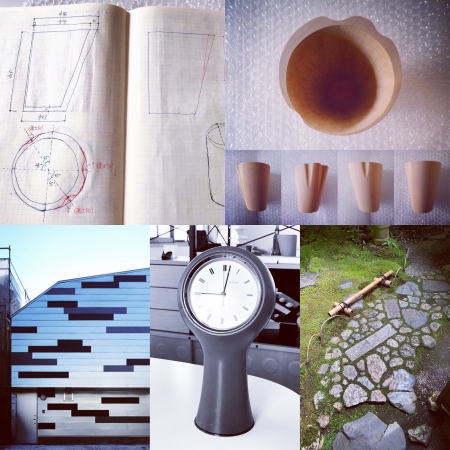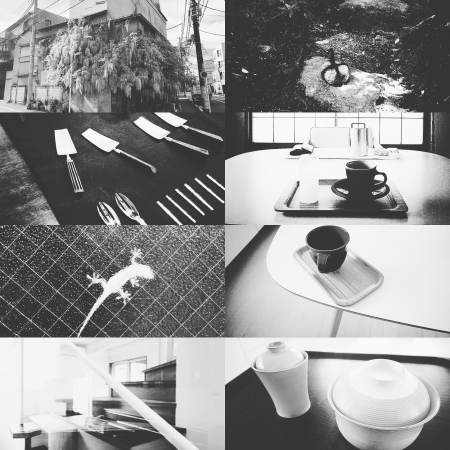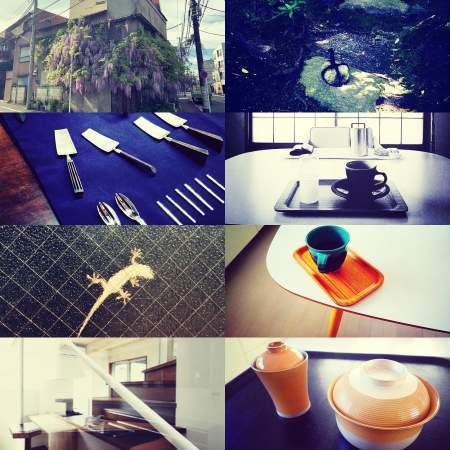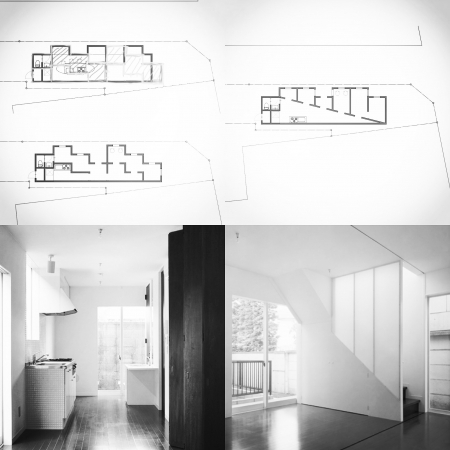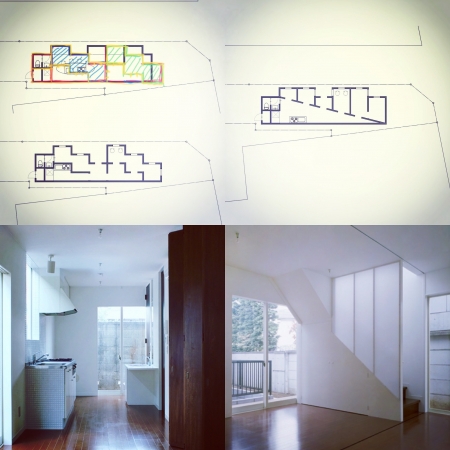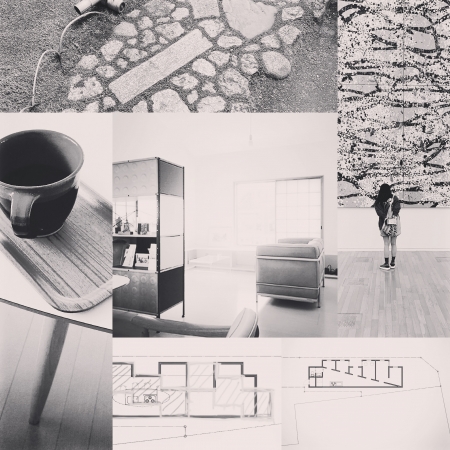過去プラン判子
言葉以外で記憶を表現しようした時、建築において数値が端的に表現された寸法を用いる。言葉と違って数値だけが解釈によって変わらずに記憶を表現できると言ってもよい。ではその寸法はいつも同じだろうか。決してそのようなことはない。その場所で偶然そうなっただけである。だから、他の場所へ行けば当たり前だがいくらでも寸法は変化をする。ならば、寸法にその場所だけの固有性があり記憶として表現されるならば、その記憶としての寸法を引き継ぐことは建築として必然の行為ではないだろうか。
例えば、過去のプランがあり、そこに固有の寸法を見つけ出したならば、それをパターン化し判子のように転写を繰り返して新しいプラン、新しいエレベーションをつくってはどうだろうか。固有の寸法がまた違ったものになる、それも判子という効率を具現化したようなアイテムによって。
記憶という効率を考える上で排除されるようなもの、すなわち、他者性を帯びたものがパターン化し判子として転写されることでより活きるのであれば、効率の先に多様なモノがみえる。
数値は効率のために用いるものなのに、効率によって排除された記憶を表現するものになるところが面白いと思った。
"Past plan stamp"
When trying to express memory with something other than words, we use dimensions that express numerical values in architecture. It can be said that, unlike words, only numerical values can express memories without change depending on the interpretation. So are the dimensions always the same? That is never the case. It just happened to happen at that place. Therefore, if you go to another place, it is natural, but the dimensions will change as much as you like. Then, if the dimension has the uniqueness of the place and is expressed as a memory, it would be an inevitable act as an architecture to inherit the dimension as the memory.
For example, if you have a plan in the past and find a unique dimension in it, why not pattern it and repeat the transfer like a stamp to create a new plan or a new elevation? The unique dimensions will be different again, depending on the item that embodies the efficiency of a stamp.
If something that is excluded when considering the efficiency of memory, that is, something that has otherness, is patterned and transcribed as a stamp, it will be more useful, then various things can be seen beyond the efficiency.
I found it interesting that the numerical values are used for efficiency, but they express the memories excluded by efficiency.

